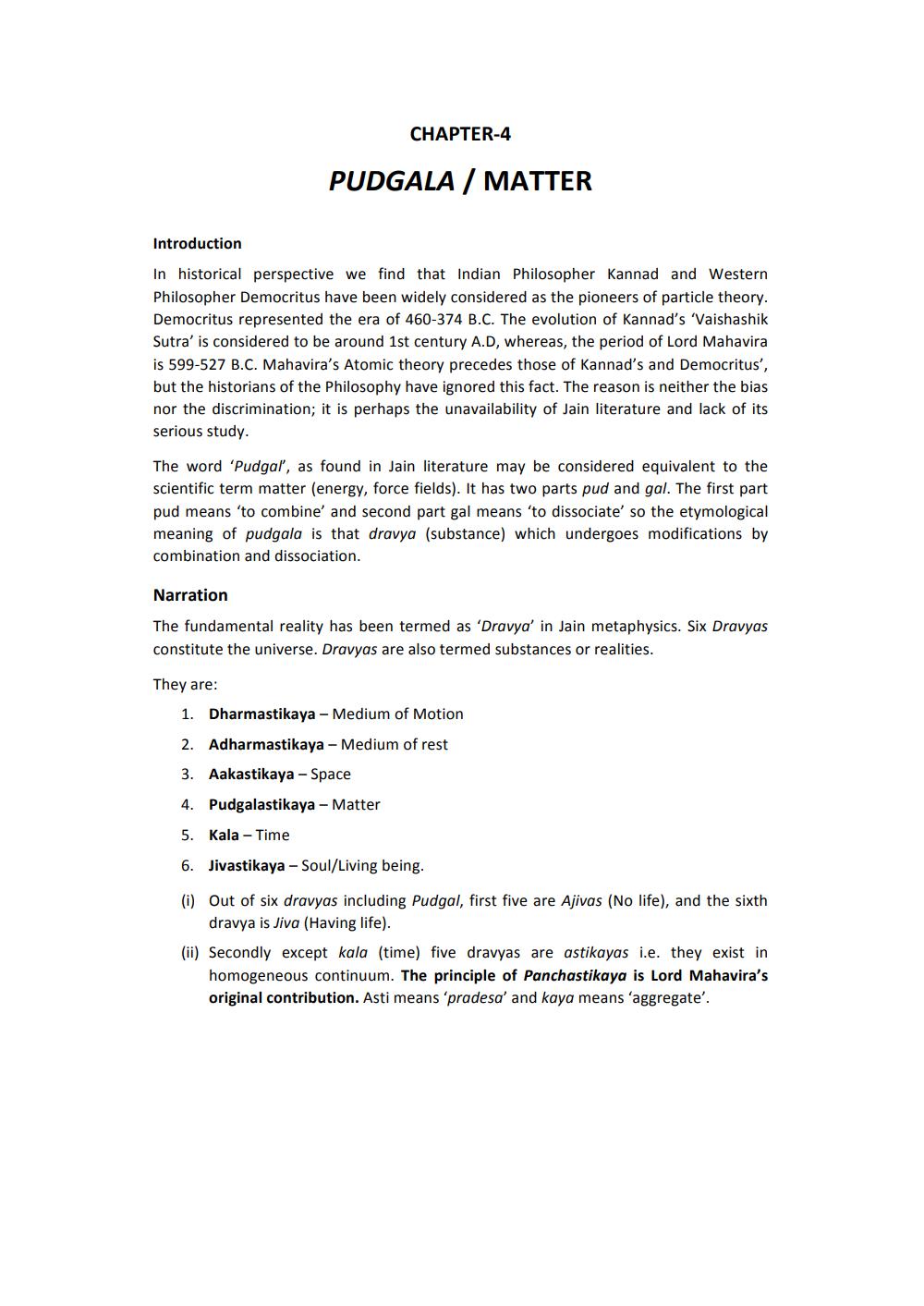________________
CHAPTER-4
PUDGALA / MATTER
Introduction In historical perspective we find that Indian Philosopher Kannad and Western Philosopher Democritus have been widely considered as the pioneers of particle theory. Democritus represented the era of 460-374 B.C. The evolution of Kannad's 'Vaishashik Sutra' is considered to be around 1st century A.D, whereas, the period of Lord Mahavira is 599-527 B.C. Mahavira's Atomic theory precedes those of Kannad's and Democritus', but the historians of the Philosophy have ignored this fact. The reason is neither the bias nor the discrimination; it is perhaps the unavailability of Jain literature and lack of its serious study.
The word 'Pudgal', as found in Jain literature may be considered equivalent to the scientific term matter (energy, force fields). It has two parts pud and gal. The first part pud means 'to combine' and second part gal means 'to dissociate' so the etymological meaning of pudgala is that dravya (substance) which undergoes modifications by combination and dissociation.
Narration
The fundamental reality has been termed as 'Dravya' in Jain metaphysics. Six Dravyas constitute the universe. Dravyas are also termed substances or realities.
They are:
1. Dharmastikaya - Medium of Motion 2. Adharmastikaya - Medium of rest 3. Aakastikaya - Space 4. Pudgalastikaya - Matter 5. Kala - Time 6. Jivastikaya - Soul/Living being.
(i) Out of six dravyas including Pudgal, first five are Ajivas (No life), and the sixth
dravya is Jiva (Having life). (ii) Secondly except kala (time) five dravyas are astikayas i.e. they exist in
homogeneous continuum. The principle of Panchastikaya is Lord Mahavira's original contribution. Asti means 'pradesa' and kaya means 'aggregate'.




